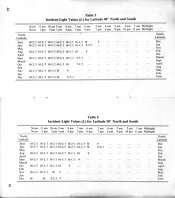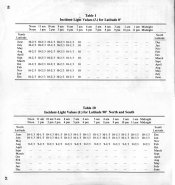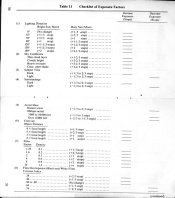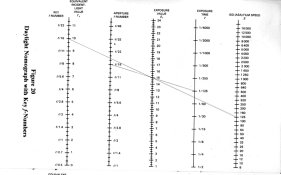I sometimes use Johnson's Exposure Disc:
http://www.cwog.co.uk/share/johnsonexps.jpg
You put it into a start position then rotate it depending on time, time of year, film speed, light and scene.
To try out the method without having a disc, I have converted it to a series of adding and subtracting sequences as shown below:
Start with a number depending on ISO used:
ISO 25 +8
ISO 50 +9
ISO 100 +10
ISO 200 +11
ISO 400 +12
ISO 800 +13
ISO 1600 +14
Add a number depending on the light conditions:
Strong sun with white clouds +4
Strong Sun +3
Weak, hazy sun +2
Dull +1
Very dull 0
Add a number depending on the time and date:
May to August, 10 am to 3 pm +4
May to August, 8-10 am, 3-6 pm +3
May to August, 7-8 am, 6-7 pm +2
September, October, March & April, 10 am to 3 pm +3
September, October, March & April, 8-10 am, 3-6 pm +2
September, October, March & April, 7-8 am, 6-7 pm +2
November to February, 10 am to 3 pm +2
November to February, 9 to 10 am +1
And finally, subtract a number depending on the scene:
Open sea and sky and scenes from the air 0
Distant landscapes and beach and snow scenes -1
Open landscapes and scenes with light foreground -2
Groups in the open and near views of houses and trees -3
Distant buildings and wide streets -4
Scenes with heavy foreground and near landscapes -5
Close up portraits in the shade and scenes in heavy shade -6
Bright interiors -7
Dull interiors -14 (disc says rotate twice)
As a test, put in some standard sunny 16 settings:
ISO 100, start with 10
Bright sunny day, use strong sun setting adding 3 = 13
For mid day in June, add 4 = 17
For an open landscape, subtract 2 = 15
The numbers are EV or Exposure value numbers. EV 15 is 1/125 at f16 which is what sunny 16 recommends for these conditions.
I think the disc will be out by one stop at longer shutter speeds as it uses the older sequence of speeds which has six stops between 1/2 and 1/250. i.e. 1/2, 1/5, 1/10, 1/25, 1/50, 1/100, 1/250 whereas a modern sequence will have seven stops. i.e. 1/2, 1/4, 1/8, 1/15, 1/30, 1/60, 1/125, 1/250.
Or perhaps this extra stop compensates for the one stop change film manufacturers introduced, probably after the disc was made. either way, I know the disc works as I have used it instead of a light meter many times.
Steve.











